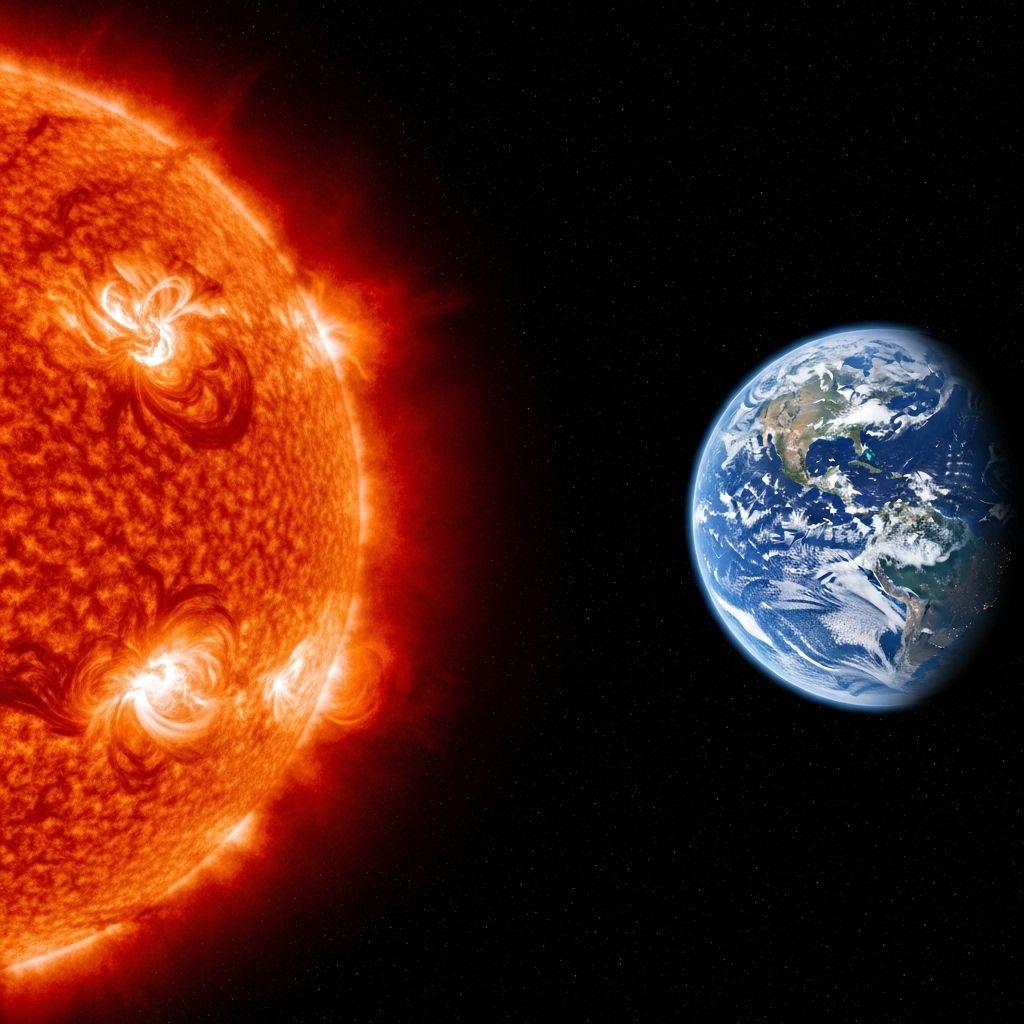Distance From Earth To Sun: 93 Million Miles (150 Million Km)
Explore Earth's dynamic relationship with the sun and how astronomers measure cosmic distances using astronomical units.

Image: HearthJunction Design Team
How Far Is Earth From the Sun?
The question of how far Earth is from the sun is foundational to our understanding of astronomy and the structure of our solar system. The answer goes beyond a simple number, revealing a story of orbits, measurement, and cosmic perspective. On average, Earth is roughly 93 million miles (150 million kilometers) from the sun, a relationship defined by the concept of the astronomical unit (AU) and shaped by the dynamics of planetary motion.
What Is an Astronomical Unit?
When astronomers needed a practical way to express vast cosmic distances, they defined a new unit of measurement based on the average distance between Earth and the sun. This unit is called the astronomical unit (AU). One AU is exactly 149,597,870,700 meters (about 92,955,807 miles or 149,597,871 kilometers), as established by the International Astronomical Union (IAU).
- 1 AU = 149,597,870,700 meters
- Equal to approximately 93 million miles or 150 million kilometers
The AU provides a baseline for describing the distances between objects in our solar system and beyond, making it easier to understand and compare planetary orbits and the scale of cosmic distances.
Why Is the Distance Between Earth and the Sun Not Constant?
Earth does not orbit the sun in a perfect circle. Its path is slightly elliptical, or oval-shaped, which means the distance between the two bodies changes throughout the year. The sun is positioned a bit off-center within this ellipse. As a result, Earth alternates between its closest approach to the sun (perihelion) and its farthest distance (aphelion).
- Closest distance (perihelion): About 91.4 million miles (147.1 million kilometers)
- Farthest distance (aphelion): About 94.5 million miles (152.1 million kilometers)
Due to this elliptical orbit, the time it takes for sunlight to travel to Earth also varies slightly, but on average, sunlight takes about 8 minutes and 20 seconds to reach us.
Earth’s Place in the Solar System: How Do We Compare?
Earth is the third planet from the sun. To better visualize planetary distances, astronomers often express each planet’s distance as a multiple of the astronomical unit. Here is a summary table of the average distance of each planet from the sun in both millions of kilometers and astronomical units (AU):
| Planet | Average Distance from Sun (Million km) | Average Distance from Sun (AU) |
|---|---|---|
| Mercury | 57 | 0.39 |
| Venus | 108 | 0.72 |
| Earth | 149 | 1.00 |
| Mars | 228 | 1.52 |
| Jupiter | 780 | 5.20 |
| Saturn | 1,437 | 9.58 |
| Uranus | 2,871 | 19.22 |
| Neptune | 4,530 | 30.06 |
How Do Astronomers Measure Astronomical Units?
The method for determining the Earth-sun distance has evolved dramatically over time. Early astronomers used geometric techniques, sometimes involving observations of transits of Venus or Mars. Today, high-precision techniques such as radar ranging and spacecraft telemetry allow astronomers to determine the AU with extraordinary accuracy.
- Radar Ranging: Sending radio waves to Venus or another nearby planet and timing how long they take to bounce back.
- Spacecraft Tracking: Using the position of space probes (like those sent to Mars or Venus) to refine measurements of planetary distances.
- Observational Geometry: Applying principles of trigonometry and parallax from Earth-based observations.
These techniques, combined, have refined the AU to its current highly precise value.
Why Use Astronomical Units?
Distances in space are immense. The AU provides a manageable way to discuss and compare these distances without resorting to huge numbers. For example:
- The average distance from Earth to the sun is 1 AU by definition.
- Jupiter’s average distance from the sun is about 5.2 AU.
- Neptune orbits about 30.06 AU from the sun, or 30 times farther from the sun than Earth.
Beyond the solar system, distances are measured in light-years and parsecs. But within the solar system, the AU is the most logical unit to use.
Sunlight Travel: How Long Does It Take?
Light travels at about 186,000 miles per second (300,000 kilometers per second). Covering the distance from the sun to Earth (1 AU, or 93 million miles), sunlight takes approximately 8 minutes and 20 seconds to make the journey.
“It is so far away that light from the Sun, traveling at a speed of 186,000 miles (300,000 kilometers) per second, takes about 8 minutes to reach us.”
Does Earth’s Distance From the Sun Affect Our Seasons?
Contrary to popular belief, Earth’s changing distance from the sun does not cause the seasons. Instead, seasons result from the tilt of Earth’s axis. As Earth revolves around the sun, its 23.5-degree tilt causes different portions of the planet to receive varying amounts of sunlight at different times of year. This axial tilt, not proximity to the sun, is why we experience summer and winter.
In fact, Earth is closest to the sun in early January (perihelion) — during winter in the northern hemisphere — and farthest in early July (aphelion), during northern summer.
Astronomical Units and Space Exploration
The concept of the astronomical unit is not only useful for mapping the solar system but also forms the foundation for planning and navigation in space missions. When NASA or other agencies send spacecraft to planets, moons, or asteroids, distances are calculated in AUs, making flight path planning and communication timing much easier.
For example, knowing the exact distance in AUs allows mission planners to calculate how long it will take for radio signals to reach a spacecraft and to determine fuel requirements for interplanetary journeys.
Visualizing the Solar System: Scale Models
To truly grasp the immensity of the solar system, astronomers and educators often create scaled models. For instance, if Neptune’s orbit were set at 10 feet from a model sun, Jupiter’s orbit would be just about 2.2 feet (26.2 inches) away. Such models help highlight just how empty and vast the space between planets really is.
- Scale models make the solar system’s size comprehensible.
- Distances between planets are far greater than the planets themselves.
Fun Facts About the Sun’s Distance From Earth
- Right now, the sun is about 151,909,000 kilometers (almost 1.016 AU) from Earth, but this changes daily as we orbit.
- The International Space Station orbits just 400 km above the Earth, a tiny fraction of the distance to the sun.
- Light from the sun lights up the moon, which is about 384,400 km away from Earth — still just 0.00257 AU.
Frequently Asked Questions (FAQs) About Earth’s Distance From the Sun
What is the current distance from Earth to the sun?
The current distance varies throughout the year due to Earth’s elliptical orbit, but it’s approximately 93 million miles (150 million kilometers) on average. At this moment, it may be slightly more or less depending on our position in orbit.
What is an astronomical unit (AU)?
An astronomical unit is a standard unit of measurement in astronomy denoting the average distance from Earth to the sun: exactly 149,597,870,700 meters (149,597,871 kilometers or 92,955,807 miles).
Why does the distance between Earth and the sun vary?
Earth’s orbit is slightly elliptical, meaning it sometimes is closer to the sun (perihelion) and sometimes farther away (aphelion). The difference is about 3 million miles (5 million km) between closest and farthest points.
Does Earth’s distance from the sun cause the seasons?
No. Earth’s seasons are caused by the tilt of its axis, not by how close or far it is from the sun.
Can you see the change in the sun’s size during the year?
Yes, but only with precise instruments. The sun appears slightly larger in the sky when Earth is closer (in January) and a bit smaller when farther away (in July).
How long does light from the sun take to reach Earth?
On average, sunlight takes about 8 minutes and 20 seconds to travel from the sun to Earth.
Conclusion
The distance from Earth to the sun is not just a number — it’s a dynamic measurement at the heart of astronomy. Defined as 1 astronomical unit (AU), or about 93 million miles (150 million kilometers), this distance helps scientists and explorers alike to map, navigate, and understand our place in the solar system. Whether planning a mission to Mars or simply gazing up at the sky, knowing how far we are from our star gives us perspective on the vast and wondrous cosmos we call home.
References
Read full bio of Srija Burman











